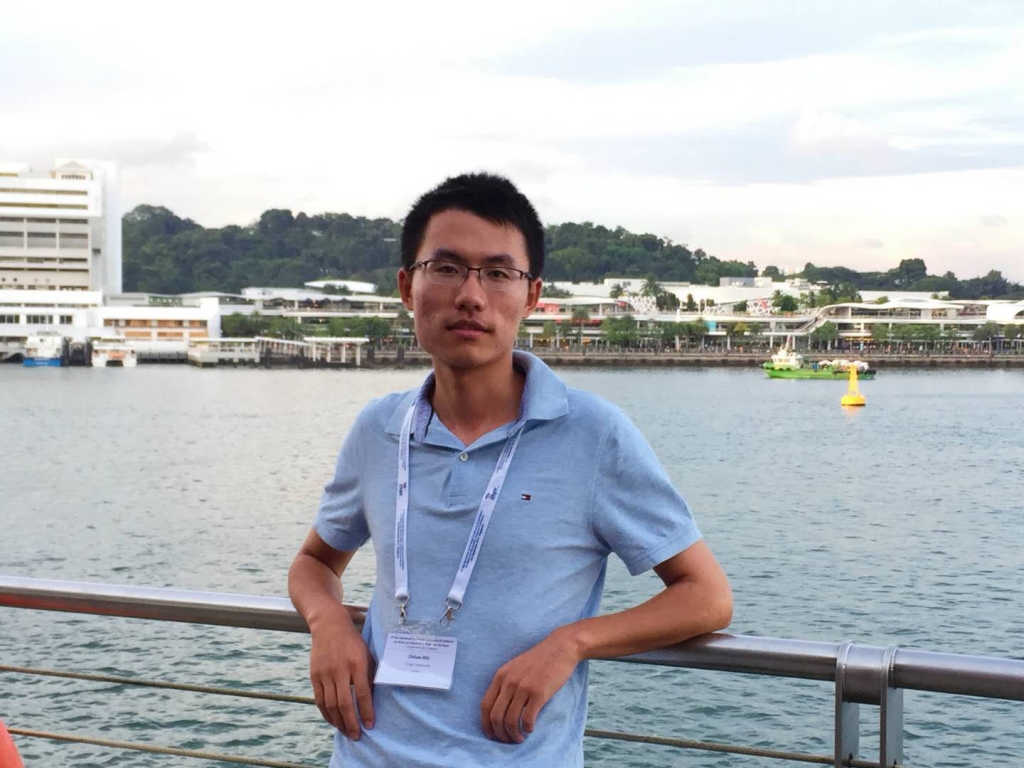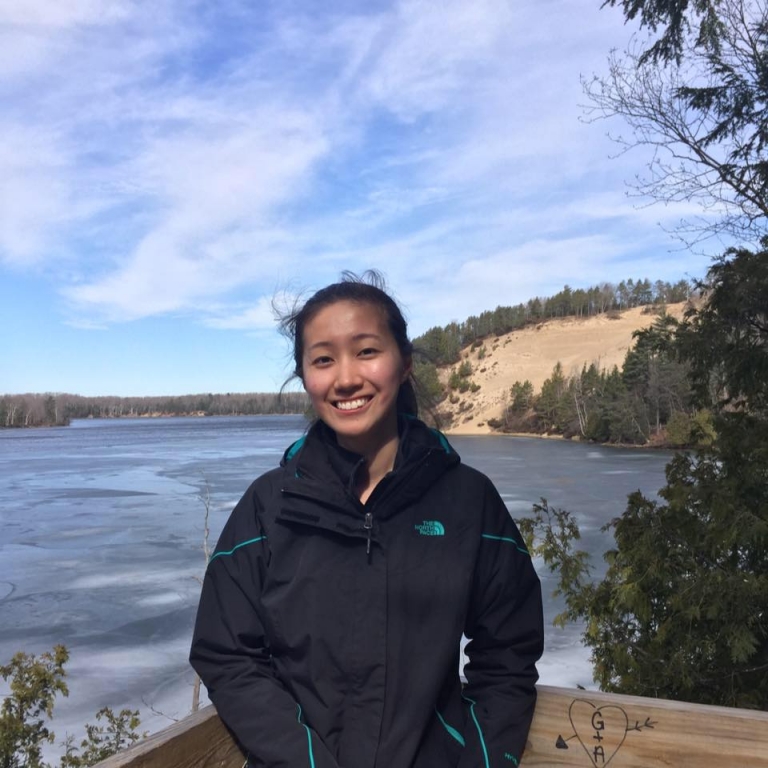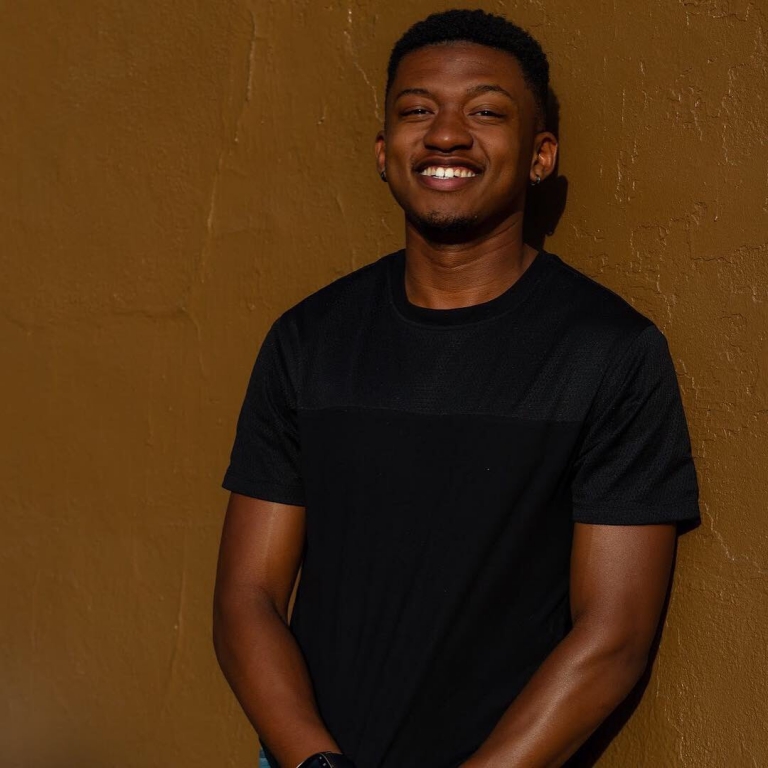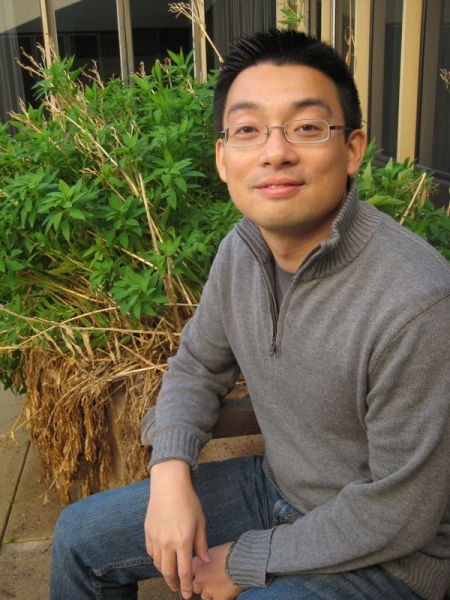
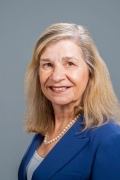
Fred and Claire Sauer Professor of Environmental Engineering
Lisa Alvarez-Cohen is the Vice Provost for Academic Planning, Fred and Claire Sauer Professor, and past Chair of the Department of Civil and Environmental Engineering and of the Faculty Senate at UC Berkeley. Cohen’s research focuses on biotransformation and the fate of environmental water contaminants, environmental microbiology and ecology, bioremediation, biological wastewater nutrient removal, and the application of molecular and isotopic techniques for studying environmental microbial communities. She has won many awards, including the China 1,000 Talents National Award, the ASCE Simon W. Freese Environmental Engineering Award, the W.M. Keck Foundation Award for Engineering Teaching Excellence, and the National Science Young Investigator Award. She is also a member of several professional organizations, including the National Academy of Engineering, the American Academy of Microbiology, and the Association of Environmental Engineering and Science Professors.
Ph.D., Environmental Engineering and Science, Stanford University
M.S., Environmental Engineering and Science, Stanford University
B.A., Engineering, and Applied Science, Harvard University
Cohen's research focuses on environmental microbiology and ecology, biotransformation and fate of environmental contaminants, anammox processes for nutrient removal from wastewaters and innovative molecular and isotopic techniques for studying the microbial ecology of complex communities. Her research group looks at the application of omics-based molecular tools and isotopic techniques to understand and optimize the bioremediation of emerging and conventional environmental contaminants to facilitate beneficial nutrient removal from wastewater. Bioremediation and nutrient removal rely upon complex mixed microbial communities that interact to catalyze important reaction pathways. Here are a few of the research projects the Alvarez-Cohen lab is currently working on below:
Trichloroethene Remediation - Trichloroethene (TCE) is a commonly detected contaminant at Superfund sites and is frequently listed on the U.S. EPA’s National Priorities List. To date, Dehalococcoides mccartyi (Dhc) strains are the only known organisms that can completely dechlorinate TCE to ethene. In situ bioremediation employing Dhc has become an important process for addressing groundwater contamination with chlorinated solvents. Although much has been learned with respect to the metabolism of Dhc-based microbial communities, the effects of geochemical perturbations on dechlorinating communities are still unknown. As other electron-accepting processes in groundwater environments might impact TCE-dechlorination, the objective of our study is to investigate how dechlorination communities respond to the changes in these conditions by constructing various Dhc-containing consortia in batch and completely mixed flow reactors (CMFRs). Ongoing experiments are analyzing the toleration for sulfate perturbation in CMFRs. Future experiments will also include the investigation about other geochemical factors’ influence, such as pH, alkalinity, on the communities. The information gained from this study will contribute to the development of engineered solutions that seek to optimize TCE dechlorination conditions.
AFFF Remediation - Poly and perfluoroalkyl substances (PFASs) are key components in aqueous film forming foams (AFFFs), complex chemical mixtures typically containing fluorinated and hydrocarbon surfactants and one or more glycol ether-based solvents, that have been widely used since the 1960s by the military and municipalities to extinguish hydrocarbon fuel fires and to prevent reignition. PFAS compounds, such as perfluorooctane sulfonate (PFOS) and perfluorooctanoate (PFOA), have recently been designated emerging contaminants due to concerns over environmental and human health effects. More specifically, PFASs are environmentally persistent, exhibit toxicity in human and animals, and can bioaccumulate. For these reasons, the use of PFOA, PFOS, and other C8 PFASs has been discontinued.
Repeated AFFF application at training facilities where firefighting exercises were conducted in unlined pits has led to elevated levels of PFASs in groundwater at sites that are often contaminated with chlorinated solvents, such as trichloroethene (TCE) and its toxic daughter products and dioxane, a common stabilizer of chlorinated solvents. Although a number of studies have been conducted to understand the biotransformation and remediation strategies for PFASs present in AFFF, few have evaluated the impact of biotransformation and remediation of PFASs on the remediation of common co-contaminants TCE and dioxane, or vice versa. Our research seeks to evaluate 1) the interplay of PFASs and common co-contaminants TCE and dioxane during biotransformation and remediation of these compounds, and 2) to identify effective processes or treatment trains to address AFFF, together with common co-contaminants dioxane and chlorinated solvents. Our research will provide a holistic, rather than reductionist, approach to evaluating and treating AFFF-contaminated sites.TCE/Arsenic Remediation - In situ bioremediation of chlorinated solvents is a well-researched and commonly applied strategy for subsurface remediation. However, in sites co-contaminated with arsenic, the reducing conditions promoted during chlorinated solvent bioremediation have the adverse effect of reducing immobilized As(V) to the more mobile and toxic As(III). Of the 389 chlorinated solvent-contaminated sites on the National Priorities List, 228 are co-contaminated with arsenic. Therefore, there is a need to develop strategies for the dual bioremediation of chlorinated solvents and arsenic in order to provide a low-cost and low-disturbance remediation technology for these sites.
Using a systems microbiology approach, our lab is working to create a holistic model of microbial cells and their community functions by integrating basic biological data made possible by community-scale omics technologies and new genetic manipulation technologies. These technologies allow for high-throughput investigation of the collective pool of genomes, transcripts, proteins, and metabolites present in the entire community and the ability to manipulate the flow of genetic information at multiple levels. Taken together, this data will provide a comprehensive picture of the modeled community using knowledge of its structure, its phenotypic potential, its function, and the microbial interactions within its environment. This knowledge can then be used to optimize the dual bioremediation of chlorinated solvents and arsenic.- Nitrogen Removal from Wastewater by Anammox - The Haber-Bosch process has drastically influenced the earth’s nitrogen cycle by doubling the global rate of nitrogen gas transformation to reactive nitrogen. In aquatic ecosystems, reactive nitrogen is often a limiting nutrient that, when released, can promote the proliferation of primary producers, leading to eutrophication, reduction of biodiversity, and production of toxins. Anaerobic ammonium oxidation (anammox) is the basis for an innovative biological treatment process for the removal of reactive nitrogen from wastewater effluent. Anammox bioreactors are 60% more energy efficient than the more traditional process of sequential nitrification-denitrification, and can be operated at approximately 10% of the cost. Today, over 100 full-scale anammox bioreactors have been installed worldwide and are in operation for the remediation of ammonium-rich, in-plant municipal wastewater streams. However, these processes are plagued by long start-up times and unstable operation. Further, the bacteria responsible for anammox have very low growth rates, are inhibited by a variety of factors, and have not yet been isolated. Few studies have examined anammox bacterial response to perturbations on a cellular level, or the role of other bacteria within anammox enrichments under fluctuating reactor conditions. The Alvarez-Cohen lab seeks to fill this gap by identifying the molecular mechanisms for anammox responses to perturbations and the metabolic roles played by other community members within anammox enrichments. Recent advancements in meta-omics-based systems biology technologies provide powerful tools for analyzing the metabolism and interactions pertinent to anammox performance at the community level. Coupled with novel applications of stable isotope tracers, the Alvarez-Cohen lab seeks to generate a fundamental, community-based understanding of anammox enrichments enabling more comprehensive control and widespread adoption of this promising technology.
Previous research projects include:
- Metabolic Degradation of 1,4-dioxane by Pseudonocardia Dioxanivorans Strain CB1190: Genomic and Post-genomic Studies
- Oxygenase-Catalyzed Biodegradation of Emerging Water Contaminants: 1,4-Dioxane and N-Nitrosodimethylamine
- Quantifying Gene Expression to Predict and Optimize Reductive Dechlorination by Dehalococcoides spp.
- Application of Microarrays to Identify Biomarkers of Reductive Dehalogenating-Microbial Communities
- Using Molecular and Isotopic Tools to Characterize the Biodegradation of Chlorinated Ethenes and Ethanes
- Characterizing the fate and biotransformation of fluorochemicals in aqueous film forming forms (AFFF)
- Corrinoid coenzyme requirement for effective TCE bioremediation using Dehalococcoides
- Meta-omics of Microbial Communities Involved in Bioremediation
- Biodegradation of the Flame Retardants Polybrominated Diphenyl Ethers
- Characterizing and Evolving the Propane Monooxygenase for N-Nitrosodimethylamine Biodegradation and Green Chemistry
• Elected Fellow of the Association of Environmental Engineering and Science Professors 2019
• SERDP Project of the Year Award, Environmental Restoration 2017
• China 1,000 Talents National Award, Foreign National Expert 2016
• ASCE Simon W. Freese Environmental Engineering Award 2014
• Honorary Professor, Tongji University, Shanghai, P.R. of China 2013
• Elected to the National Academy of Engineering 2010
• Named one of “6 Scientists on the Cutting Edge of Energy and Environmental 2009
Research” by USNews and World Report
• Advisor to winner of CH2M Hill/AEESP Outstanding Doctoral Dissertation Award 2008
• Environmental Science and Technology Excellence in Review Award 2006
• Association of Environmental Engineering and Science Professors Distinguished Service Award 2003
• Elected Fellow of the American Academy of Microbiology 2002
• Awarded the Fred and Claire Sauer Chair in Environmental Engineering 2001
• National Science Foundation Young Investigator Award 1994-1999
• W. M. Keck Foundation Award for Engineering Teaching Excellence 1994
• Advisor to one undergraduate and three graduate student winners of 1994, 1998
Water Environment Federation Student Paper Competition and graduate
winner of the American Society of Civil Engineers Student Essay Competition
• Voted “Most Entertaining Lecturer” and “Most Enthusiastic Professor” by 1993, 1996
Berkeley Undergraduate Chapter of the American Society of Civil Engineers
• Department of Energy Environmental Restoration and Waste Management 1992-1994
Junior Faculty Award
• Association of Environmental Engineering Professors Doctoral Thesis Award 1992
• University of California President's Post-Doctoral Fellowship 1991
• Switzer Foundation Graduate Scholarship 1989-1991
• AWWA Larson Aquatic Research Support Scholarship 1989
• American Chemical Society Graduate Student Award in Environmental Chemistry 1989
• National Science Foundation Predoctoral Fellowship 1985-1988
Professor Alvarez-Cohen teaches graduate and undergraduate courses in environmental microbiology, environmental engineering, biological process engineering. She is the co-author of the undergraduate textbook, Environmental Engineering Science.
Alvarez-Cohen Research Group Current Members
| Ned Antell, PhD Student Ned is a PhD student interested in biological, chemical, and physical solutions to water and wastewater treatment. Prior to graduate school, Ned was lab manager in the Alvarez-Cohen lab for three years where he studied the anammox process for nitrogen-rich waste streams in addition to fulfilling other managerial duties. |
| Grace Campbell, Undergraduate Student Researcher Grace is in her senior year studying Environmental Engineering Science and her second year assisting in the Alvarez-Cohen lab as an undergraduate researcher. She is currently a ReNUWit Research Scholar focused on studying the downstream effects of the transformation of poly- and perfluoroalkyl substances (PFASs) on bioremediation of 1,4-Dioxane. Grace is interested in chemical transformation of pollutants in groundwater and pollutant transport and fate. |
| Emily Cook, PhD Student Emily's research is chemistry-focused, looking at the transformation of per- and polyfluoroalkyl substances (PFASs) by heat-activated persulfate oxidation. She works to make chemical oxidation a feasible in situ remediation strategy for PFAS-contaminated sites around the country. Her current question is if PFSAs (with a sulfonic acid head group) can somehow be manipulated to be transformed via persulfate. |
| Emily Gonthier, PhD Student Emily is fascinated by the ability of microorganisms to both shape and adapt to the environment around them. Her research focuses on elucidating the microbial metabolisms and community interactions that drive the nutrient cycling and pollutant transformation necessary to improve water quality in engineered natural treatment systems. |
| Ray Keren, Post Doc Ray's research interests is in microbial metabolism. He is part of the Superfund group working on developing an integrated bioremediation system for both arsenic and TCE in sediment and groundwater. Another project he is partaking in is the study of microbial communities in an anammox bioreactor, with an emphasis on the community dynamics and metabolic interdependencies. Ray studies these metabolic processes by using bioinformatic analysis of metagenomic and genomic data. Ray completed his PhD in microbiology at Tel Aviv university with Prof. Micha Ilan. |
| Mason King, Lab Manager Mason provides purchasing, inventory, and lab safety assistance to the LAC group. He operates and maintains various bioreactors including anammox and TCE dechlorinating consortia. Mason is interested in the intersection of sustainable water technologies and policy. He currently works on Life Cycle Assessment (LCA) applied to biological nutrient removal processes in wastewater treatment. |
| Zhihao Niu, visiting PhD, Tongji University Zhihao focuses on biological processes for wastewater treatment. Currently, he is investigating the start-up of anammox biofilm membrane reactor and nanoparticles’ effect on anammox biomass. He aims to figure out the mechanism of anammox’s response to external shock and accelerate the start-up of anammox bioreactors. |
Chris Olivares, Post Doc As part of the AFFF group, Chris Olivares researches chemical and biological transformations of poly- and per-fluoroalkyl substances (PFASs) present in sites polluted with aqueous fire-fighting foam formulations (AFFF) and co-contaminants. In particular, he is interested in 1) employing targeted and non-targeted mass spectrometry tools to identify transformation pathways of PFASs and microbial metabolites, and 2) studying the interactions between PFAS and co-contaminant biodegrading/biotransforming microbial communities. When not in the lab, he enjoys swimming with Cal's Fuego swim team. Chris received his PhD in Environmental Engineering from the University of Arizona, where he worked on biotransformation and toxicity of insensitive munitions components. | |
Sophia Steffens, PhD Student Sophia is studying the solution behavior of groundwater contaminants with the goal of devising new strategies for their treatment and removal. She is passionate about sustainable agriculture and hopes to gear her work towards improving agricultural water management. | |
| Mohan Sun, PhD Student Mohan’s research mainly focuses on utilizing engineering methods to enhance in situ bioremediation of trichloroethene (TCE) using Dehalococcoides mccartyi (Dhc)-containing consortia. Mohan works with classic batch reactors and completely mixed flow reactors to simulate and investigate various naturally-occurring geochemical conditions’ effects on TCE dechlorination consortia. Mohan also utilizes transcriptomics (RNA-Seq) and metabolomics to understand the differential gene expression and metabolites exchange among the different members of the consortia. Finally, Mohan participates in using CRISPR Cas9 to knock out genes of interest in the genome of Desulfovibrio vulgaris Hildenborough (DvH), thus investigating the syntrophic relationship between DvH and Dhc. |
| Eric Troyer, PhD Student Hi. I’m Eric. I’m working on the pfas-cinating subject of PFAS groundwater remediation and analysis. Since the elements composing PFASs are held together by stronger bonds than those shared between Voldemort and his horcruxes, they provide a unique challenge to remediate. Yet, the fun in science comes from its difficulties (and the free seminar cookies), and our lab has excellent people and equipment to work on the PFAS remediation problem. The pfas-ter we figure it out the better! |
| Katerina Tsou, PhD student Katerina is interested in the bioremediation of organic contaminants. She is currently in the Aqueous Film Forming Foam (AFFF) group focused on developing microbial technology and is looking forward to discovering more about its role in making the environment safer. |
| Christian White, PhD Student Christian is interested in the development of microbial techniques to improve sustainable wastewater treatment. In research, he is interested in using omic techniques to study anammox, anaerobic ammonium oxidative, bacteria, their metabolic pathways, and different inhibitors to their conversion of ammonium to nitrogen gas. |
Previous Members
| Sara Gushgari-Doyle, PhD Sara's doctoral research focused on understanding signal and nutrient exchanges among members of microbial communities in a variety of environments and metabolisms using laboratory and "-omics" analyses. Specifically, she worked on remediation of contaminant mixture sites (e.g. chlorinated solvents and metalloids). After obtaining her PhD, she went on to a postdoctoral scholar position at Lawrence Berkeley National Laboratory in the Chakraborty group. |
| Shan Yi, PhD Shan Yi is a Lecturer in the Department of Chemical and Materials Engineering at the University of Auckland, New Zealand. Before taking this position, Shan was an Assistant Project Scientist in the Department of Civil and Environmental Engineering at the University of California, Berkeley. Broadly speaking, her research addresses microbial metabolism and syntrophic interactions and their impact on the performance of engineering bioprocesses. More recently, Shan has focused on investigating the biotransformation and remediation of per- and polyfluoroalkyl substances (PFAS) to tackle pressing PFAS contamination problems worldwide. Shan obtained her Ph.D. in Environmental Engineering from Nanyang Technological University in Singapore and her baccalaureate in Biochemical Engineering from Tianjin University in China. Webpage link: https://unidirectory.auckland.ac.nz/profile/shan-yi Twitter link: https://twitter.com/shanmyi |
| Wei-Qin Zhuang, PhD Dr. Wei-Qin Zhuang has a bachelor's degree in Bio-Chemical Engineering from Tianjin University in China. Both his master’s and Ph.D. degrees in Environmental Engineering were obtained from Nanyang Technological University in Singapore. His dissertation was focused on developing an innovative aerobic granulation system to treat industrial wastewater. After his Ph.D. defense, he joined the University of California at Berkeley as a postdoctoral fellow in the Department of Civil and Environmental Engineering where he investigated central metabolisms in important bioremediation anaerobic bacteria by using genetic engineering, genomics and metagenomics, and metabolomics techniques. Prior to joining the University of Auckland, he worked as an Assistant Scientist at the Center for Re-Inventing the Nation’s Urban Water Infrastructure (ReNUWIt) at UC Berkeley to develop an energy and cost-effective nitrogen removal process built upon anaerobic ammonium oxidation (anammox) bacteria. Webpage link: https://unidirectory.auckland.ac.nz/profile/wq-zhuang Twitter link: https://twitter.com/WeiQinZhuang1 |
 | Jennifer Lawrence, PhD Jennifer is interested in the development of microbial technologies for sustainable wastewater treatment. Currently, she is studying the interactions between anaerobic ammonium oxidizing bacteria and zeolite particles for the enhanced removal of nitrogen from wastewater effluent. Jennifer is interested in this technology's applications in both developed and developing countries. |
Yilu Sun, visiting PhD, Institute of Technology (HIT) Yilu is interested in bioremediation and microbial technologies for persistent pollutions treatment. Recently, he is focusing on the in situ remediation of aqueous film forming foams (AFFF) with chlorinated compounds and 1,4-dioxane as potential co-contaminants using the dual approach of heat-activated persulfate oxidation and bioremediation. | |
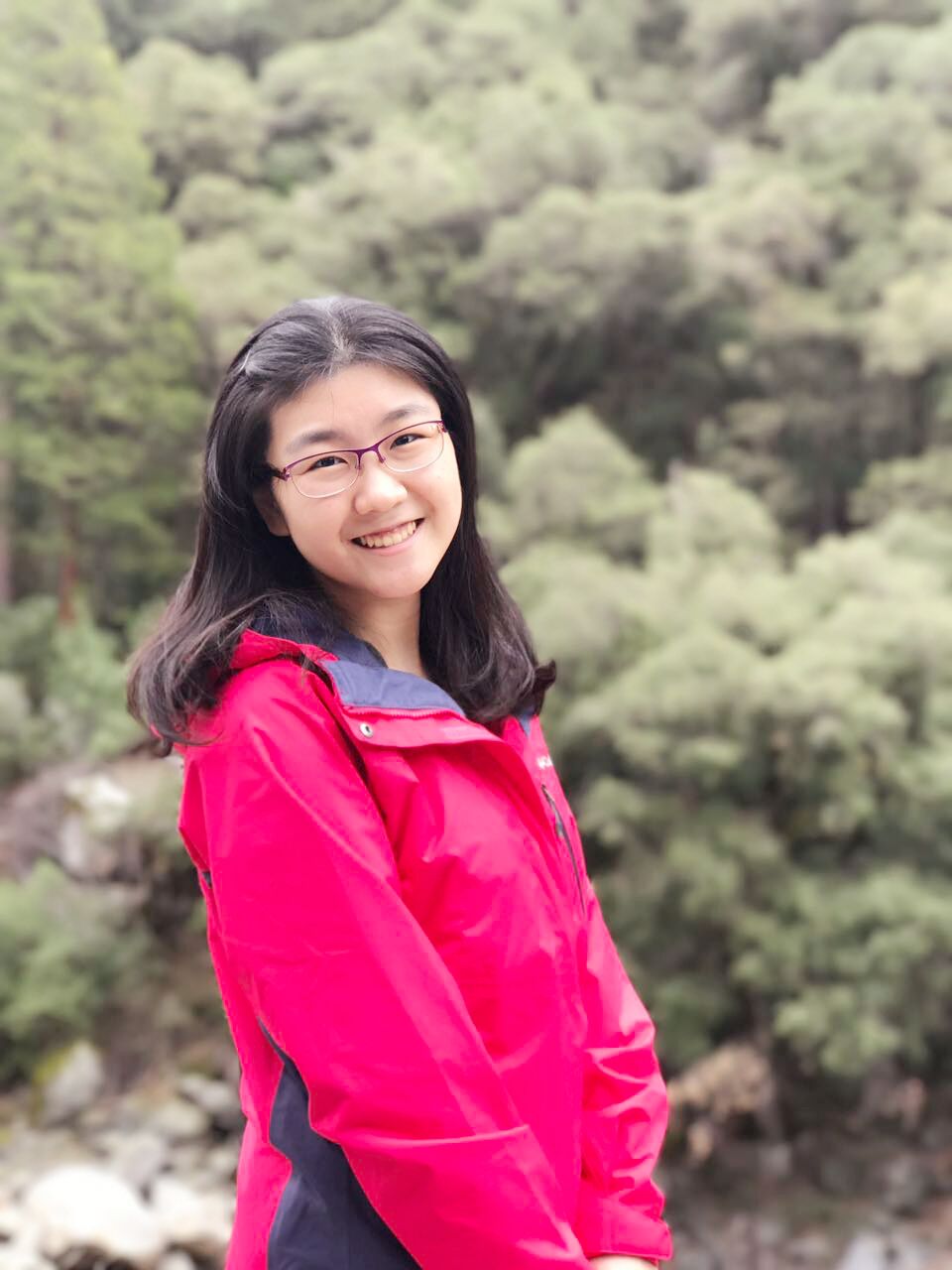 | Xuening Zhang, visiting PhD, Harbin Institute of Technology (HIT) Xuening is interested in evaluating the role of soluble microbial products (SMPs) in biological wastewater treatment system. Currently, she is investigating the effect of SMPs and extracellular polymeric substance (EPSs) on the interaction among denitrifiers, dissimilatory nitrate reduction to ammonium (DNRA) bacteria and anammox communities in anammox bioreactors. |
Siang Chen Wu, Post Doc Siang Chen is interested in many environmental microorganisms and especially in their environmentally friendly applications in bioremediation and bioenergy aspects. He completed his Ph.D. in Environmental Engineering at National Chung Hsing University with Prof. Chi-Mei Lee. Currently, he gets involved in the anammox group and continuously focuses on our ongoing goals: (i) comprehensively understanding the metabolism of the anammox bacteria by integrated omics analyses; (ii) trying to isolate the slow-growing anammox bacteria; and (iii) proposing useful strategies to build up a robust anammox community and to accelerate the start-up speed for anammox bioreactors. | |
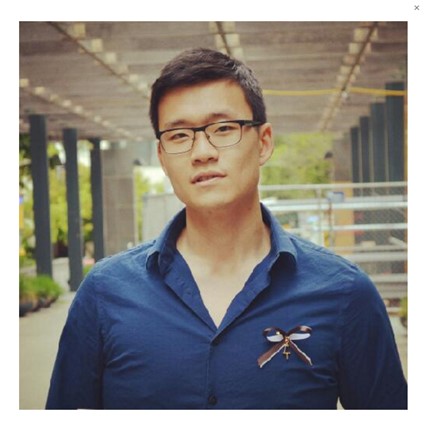 | Jae Ho Bae, Junior Specialist Jae Ho's research interest is in chemical kinetics in open and closed environmental systems. He is part of the chlorinated solvents group, which works to keep our water sources, such as aquifers, free of contamination. His research is focused on developing innovative bioremediation techniques that are both economical and reliable. Jae Ho received his B.S. in Chemical Engineering from UC Berkeley in 2015 |
 | Stephanie Jones, Post Doc Stephanie is studying microbial mechanisms of bioremediation. She completed her Ph. D. in Chemistry at UC Berkeley with Prof. Michelle Chang in collaboration with Prof. Arash Komeili. |
 | Patrick Gregoire, Post Doc Patrick has a Ph.D. in Microbiology specialized in extremophilic anaerobic bacteria. He’s interested in discovering more bacteria and their role in the environment. Patrick is part of the anammox group and is facing two challenges 1) trying to isolate the bacterium 2) in the absence of pure culture, understand the metabolism of those bacteria using an anaerobic continuous flow membrane reactor. |
 | Tong Liu, Post Doc I am most interested in bioremediation and microbial ecology. At the moment my work is mostly oriented towards investigating geochemical impacts on TCE-dechlorinating consortia by “-omics” analysis. |
 | Katie Harding, PhD Student The goals of Katie's research are to understand the fate and transport of chlorinated solvents in the subsurface, specifically those transformation pathways resulting from biodegradation processes. The use of molecular and biochemical tools that can be used to monitor and assess degradation in situ are studied, including stable carbon isotope fractionation and various molecular techniques such as qPCR, with the ultimate goal of improving bioremediation strategies. These research objectives include 1) understanding the variation in stable isotope fractionation patterns of chlorinated solvents in lab cultures and subsequently merging those observations with field and enrichment-derived fractionations to illuminate processes contributing to the variation, and 2) the continued characterization of key organisms responsible for chlorinated solvent degradation, Dehalococcoides spp. and other supporting microorganisms, including their distribution and activity in field environments. |
Xinwei Mao, PhD Student Xinwei's PhD research focuses on understanding the electron flows in TCE-dechlorinating microbial communities using modeling and molecular biology tools, with a specific interest in the physiology and modeling the anaerobic TCE-dechlorinating syntrophic microbial consortia. | |
| Yujie Men, Postdoctoral Researcher Yujie received her PhD degree in the Alvarez-Cohen research group and is now continuing as a Postdoctoral Researcher. Her research mainly focuses on: 1) investigating the microbial ecological interactions between the TCE-dechlorinating anaerobic microorganism Dehalococcoides mccartyi and its supportive microorganisms within microbial communities. Chlorinated ethenes have long been known as common groundwater contaminants in the United States. D. mccartyi is, so far, the only microorganism capable of reductively dechlorinating chloroethenes to ethene. Corrinoids such as cobalamin are essential cofactors of reductive dehalogenases, but cannot be synthesized by D. mccartyi strains. Recent studies have shown that D. mccartyi can grow in communities without cobalamin amendment. Yujie is currently trying to identify potential corrinoid- providing microorganisms within these communities and understand the essential nutrient exchange between D. mccartyi and those supportive microorganisms; 2) developing energy sustainable domestic wastewater treatment techniques using direct anaerobic digestion in membrane bioreactors. Conventional domestic wastewater treatment has large footprint, uses a vast amount of energy for aeration with little energy recovered from the sewage, and generates excess activated sludge which costs more space and money to deal with. Direct anaerobic digestion of wastewater converts the organic matters in the influent into methane, which by careful collection can be used as energy source, thus may turn the municipal wastewater treatment plant from energy-negative to energy-neutral or even energy-positive. Yujie is conducting studies on making the direct anaerobic digestion more stable and robust, as well as improving the treatment process to meet the more and more stringent regulation standards on organics and nutrients in the effluent. A variety of lab approaches are applied in her research, including molecular tools such as PCR, quantitative real-time PCR (qPCR), cloning techniques, microarray and next generation sequencing technologies; analytical tools such as gas chromatography (GC), high performance liquid chromatography (HPLC), as well as liquid chromatography tandem mass spectrometry (LC/MS/MS). |
Renato Montagnolli, Visiting Scholar Renato is a visiting student currently conducting his research at University of California, Berkeley on perfluorinated compounds biotransformation along with petroleum hidrocarbon co-contaminants. He is a doctoral student in Applied Microbiology at Sao Paulo State University, Brazil. He has a master's degree in Life Sciences and Microbiology. As an environmental microbiologist, he has been conducting his research on petroleum biodegradation kinetics as well as biosurfactant production by Bacillus subtilies for the last 5 years. He had his research sponsored by Petrobras during his bachelor of science degree in Biology from Sao Paulo State University, Institute of Life Sciencies, Brazil. | |
 | Ben Stenuit, Postdoctoral Scholar Ben’s research focuses on the characterization and management of microbial communities able to degrade anthropogenic compounds, such as chlorinated hydrocarbons (e.g., TCE and 1,1,1-TCA) and solvent stabilizers (e.g., 1,4-dioxane). With the advent of various high-throughput molecular biology techniques, Ben's major research objective is to improve microbial robustness for bioremediation using systems microbiology. Systems-biology approaches can provide a holistic understanding of microbial community function and a whole picture of the different interactions (synergistic or antagonistic) occurring in a complex microbial community. The multiple functional guilds that participate to the biodegradation process are investigated using data from metagenomics, targeted metagenomics (i.e., combination of stable isotope probing (SIP) and metagenomics) and high-resolution metagenomics (i.e., combination of fluorescence-activated cell sorting (FACS) and metagenomics). The primary goal of his research is to apply DNA-, rRNA- and mRNA-based stable isotope probing to study interspecies interactions (synergistic and competitive) in TCE-degrading microbial communities such as syntrophic coupling of fatty acid-oxidizing reactions and hydrogen- and acetate-scavenging reactions. |
 | Kimberlee West, PhD Student A few years ago, the EPA finalized its 25 year health assessment of trichloroethene (TCE), escalating TCE to "carcinogenic to humans" status. They estimated typical daily intakes by the general US population at 13 μg/day by inhalation and 0.2 μg/day from water ingestion. Kim hopes to minimize this risk by improving understanding of TCE biodegradation in the environment. Specifically, Kim is examining genetic systems within a TCE-degrading microbial community to learn how and why Dehalococcoides bacteria are able to dechlorinate TCE at relatively high rates and grow robustly and stably in consortia. Kim is comparing metagenomic, transcriptomic, and proteomic data from an enrichment culture, looking for information on Dehalococcoides and supporting or competing organisms that can be applied to TCE bioremediation strategies. |
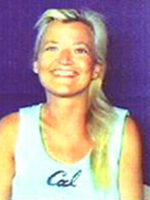 | Helene Feil, PhD, Associate Specialist The major goal of Helene's research is to optimize the microbial reduction of pollutants such as trichloroethene (TCE). TCE can be converted to harmless byproducts by a variety of microbial processes. She is looking at the genomic and transcriptomic levels to understand how these microbial communities work together to effectively reduce these toxic chlorinated solvents. She is interested in the interaction of Dehalococcoides strains with anaerobic bacterial and archeal species to identify key metabolic and other important genes used in TCE reduction. Her research will also examine the effects of various chemicals on the TCE reduction capabilities of Dehalococcoides spp. A combination of various molecular biology tools such as microarrays, quantitative and RT-PCR , as well as chemical analysis such as gas chromatography will be used to examine the transcriptome of these organisms during the various experiments. The study of stable microcosms for optimal TCE reduction can prove useful for effective bioremediation of polluted sites. |
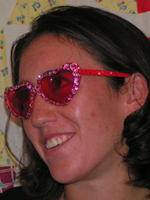 | Georgia Green, Undergraduate student Georgia Green, an undergraduate in her senior year, is currently working with enriched cultures of Dehalococcoides ethenogenes 195 to determine whether naturally occurring soil constituents, such as humics and quinones, can be used as electron acceptors. A positive result would help explain the wide distribution of Dehalococcoides spp. on the planet, prior to soil and groundwater contamination by chlorinated solvents. Georgia plans to work with the Lydia Sohn Mechanical Engineering Laboratory to further develop the Electronic Cell Typing technique. Thus far, the technique has been used to quantify DNA in single eukaryotic cells. Georgia hopes to modify the process such that RNA can be quantified in prokaryotic cells. She is working with E. coli as a model species. |
 | Ariel Grostern, Postdoctoral Researcher 1,4-dioxane is a groundwater contaminant that is also a possible human carcinogen. Particular strains of aerobic bacteria and fungi have been shown to use dioxane as a carbon and energy source, which may allow for the possibility of using bioremediation as a means to clean up contaminated sites. Ariel is studying one of these bacteria, Pseudonocardia dioxanivorans strain CB1190, for the purpose of improving our understanding of dioxane metabolism. The genome of strain CB1190 is currently being sequenced and annotated; this sequence will allow us to discover which enzyme systems are involved in dioxane metabolism, how the genes encoding these enzymes are regulated, and how dioxane is incorporated into the cell to serve as a carbon and energy source. |
 | David R. Johnson, PhD Student David's current research focuses on identifying RNA-based phylogenetic and functional biomarkers indicative of microbial communities that completely degrade PCE to ethene. To identify RNA-based biomarkers, he is applying two types of high-density microarrays to analyze the PCE-to-ethene dechlorinating bacterium Dehalococcoides ethenogenes. He is applying a 16S-rRNA phylogenetic array to identify and quantify key organisms that are present and active in Dehalococcoides-containing microbial communities. He is also applying whole-genome arrays to characterize global transcription changes when this organism is subjected to stress conditions, such as cobalamin (vitamin B12) limitations, and as this organism transitions from the exponential to stationary growth phases. Finally, his previous work focused on applying RT-qPCR to characterize the expression of the tceA reductive dehalogenase gene under differing environmental conditions and to identify correlations between tceA expression levels and reductive dehalogenation activity. |
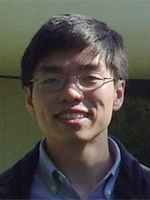 | Patrick K. H. Lee, Postdoctoral Researcher With the isolation of novel species that possess tremendous metabolic capability and the annotation of their genomes, bioremediation is a promising solution to overcome the problem of TCE contamination in groundwater aquifers. The goals of my research are to optimize the activity of Dehalococcoides spp. in reductive dechlorination and develop molecular biomarkers to monitor the physiology of the organisms in a heterogeneous environment. Available genomic information is used to guide the development of biomarkers that focus on DNA and the more labile RNA. Laboratory experiments as well as field studies are being carried out to test any hypothesis. Tools such as PCR, qPCR, RT-qPCR, microarray, and sequencing are used to achieve the research objectives. |
 | Tiffany Louie, Lab Technician/Manager Tiffany has several responsibilities, which include but are not limited to:
Tiffany is currently involved in research to verify the presence of a compound produced by Dehalococcoides ethenogenes during restricted growth conditions that negatively affects its own growth. This involves cloning of the gene responsible for production of this compound, attempting different methods of assaying for the compound, and gene product purification. |
 | Peerapong Pornwongthong, MEng Peerapong Pornwongthong's research focuses on the optimization of activity of Dehaloccocoides spp in reductive chlorination. He has chosen two biological factors, bacteriophages and bacteria to study. The emphasis is on the roles of both factors, which may affect the growth of bacteria and the ability of reductive chlorination. The main tools that has been used to detect the significance of these factors in terms of the functions of the bacterial culture and co-culture are molecular and analytical methods such as PCR, quantitative PCR (qPCR), reverse transcription quantitative PCR (RT-PCR), sequencing, nanodrop, high performance liquid chromatography (HPLC), and gas chromatography (GC). |
 | Kristin Robrock, PhD Kristin is studying the biodegradation of Polybrominated Diphenyl Ethers (PBDEs) which are flame retardants that have been used for thirty years in manufactured products such as computers, TVs, furniture and automobiles. Recently, toxicology studies have shown that penta-brominated PBDEs are endocrine disruptors at low concentrations. They have been banned and removed from the market although more highly brominated PBDEs continue to be used. Anaerobic bacteria, however, are capable of removing bromines from highly brominted PBDEs creating the toxic penta-brominated PBDEs in the process. Kristin is studying which species can degrade PBDEs, the degradation pathway and the timescales involved. She hopes that her data will help regulators ban PBDEs entirely. |
 | Christopher M. Sales, PhD Christopher's research focuses on developing an understanding of the biological systems involved in the aerobic biodegradation of the emerging water contaminant 1,4-dioxane. Although many internet blogs focus on 1,4-dioxane as a contaminate in cosmetics and personal care products due to its accidental production during the ethoxylation process in cosmetic manufacturing, 1,4-dioxane has emerged as a groundwater contaminant because of its use as a stabilizer in widely used chlorinated solvents such as trichloroethylene (TCE), perchloroethylene (PCE), and 1,1,1-trichloroethane (1,1,1-TCA). To further our understanding of the biological mechanisms involved in 1,4-dioxane biodegradation, Christopher et al. are currently working with the DOE Joint Genome Institute (JGI) on sequencing the genome of Pseudonocardia dioxanivorans CB1190. This genomic sequencing data will build the foundation to employ transcriptomic, proteomic, fluxomic, and metabolomic technologies to gain insight into the biomolecular systems in P. dioxanivorans that confer its unique ability to biodegrade and gain metabolic energy and carbon from 1,4-dioxane. |
 | Zhang Ying, Visiting Scholar The broadest significance of the proposed work is that it will lead to improved strategies for optimizing in situ bioremediation technologies. The biomarkers developed here could shorten the bioremediation process feedback cycle by replacing traditional diagnostics, such as microcosm responses that are monitored over weeks, with appropriate 16S-rRNA- and gene expression-based diagnostics that can be monitored within hours. Furthermore, the insights gained about important ecological interactions within reductive dechlorinating microbial communities will improve the ability to design, construct, and optimize bioaugmentation and biostimulation systems. |
 | Yin Yu, Visiting PhD Student from Tsinghua University Yin's study focuses on the capabilities of monooxygenase-expressing bacteria to cometabolically degrading carbamazepine (CBZ), one of the most concerned emerging micropollutants in water systems. CBZ is widely used as antiepileptic or anticonvulsant drug. It is metabolized in human liver by monooxygenases, such as cytochrome P-450 enzymes, which suggests that it is possible for bacterial monooxygenases to catalyze CBZ biotrasformation. In this study, monooxygenase-expressing bacteria were induced with individual substrates to express monooxygenase enzymes, which are similar in structures and functions to the one catalyzing carbamazepine degradation reactions in human liver. She will try to evaluate the capabilities of these strains to cometabolize CBZ, measure the degradation kinetics, and analyze the transformation pathways. |
Selected Recent Publications
- Zhou, L., Lawrence, J, Keren, R, Antell, E, Yu, K and L. Alvarez-Cohen. 2018. “Synergistic and competitive interactions among anaerobic ammonium-oxidizing, denitrifying, and dissimilatory nitrate-reducing bacteria”, in prep.
- Yi, S., K. C. Harding-Marjanovic, E. F. Houtz, Y. Gao, J. Lawrence, R. Nichporucu, A. Iavarone, W. Q. Zhuang, M. Hansen, J. A. Field, D. L. Sedlak, and L. Alvarez-Cohen. 2017. “Anaerobic Microbial Transformation of AFFF Component 6:2 Fluorotelomer Thioether Amido Sulfonate Generates Persistent 6:2 Fluorotelomer Thioether Carboxylate”, submitted.
- Ding, C., L. Alvarez-Cohen, and J. He . 2017. “Growth of Dehalococcoides mccartyi Strain 195 in an Autotrophic Consortium Producing Limited Acetate”, submitted.
- Escalas, A., L. Hale, J. Voordeckers, Y. Yang, M. Firestone, L. Alvarez-Cohen and J. Zhou. 2017. "Microbial Functional Diversity and Ecosystem Functioning: From Concepts to Applications" submitted.
- Lan, Y., B. Stenuit, G. L. Rosen, J. B. Hughes, L. Alvarez-Cohen and C. M. Sales. 2017. “Effects of historical 2,4,6-trinitrotoluene (TNT) contamination and periodic mechanical mixing on soil microbial consortia and remediation activity”, submitted.
- Sales, C.M., W. Q. Zhuang, P. B. Gedalanga, A. Grostern, S. Mahendra, R. E. Parales, and L. Alvarez-Cohen. 2017. “The genome of Pseudonocardia dioxanivorans CB1190, a metabolically versatile, autotrophic, environmental contaminant degrader”, submitted.
- Lavy, A., R. Keren, K. Yu, B. C. Thomas, L. Alvarez-Cohen, J. F. Banfield, M. Ilan. 2017. “A novel Chromatiales bacterium is a potential sulfide oxidizer in multiple orders of marine sponges”, Environmental Microbiology, DOI: 10.1111/1462-2920.14013
- Men, Y., K. Yu, J. Bælum, Y. Gao, J. Tremblay, E. Prestat, B. Stenuit, S. G. Tringe, J. Jansson, T. Zhang, and L. Alvarez-Cohen. 2017. “Metagenomic and metatranscriptomic analyses reveal community structure and dynamics of a TCE-dechlorinating community enriched without exogenous cobalamin”, Applied and Environmental Microbiology, 83 (8): e03508-16. doi:10.1128/AEM.03508-16
- Mao, X., R. Oremland, T. Liu, S. Gushgari, A. Landers, S. Baesman, and L. Alvarez-Cohen. 2017. “Acetylene fuels TCE reductive dechlorination by defined Dehalococcoides/Pelobacter consortia”, Environmental Science and Technology, 51: 2366-2372. doi: 10.1021/acs.est.6b05770
- Mao, X., A. Polasko, Lisa Alvarez-Cohen. 2017. “The Effects of sulfate reduction on TCE dechlorination by Dehalococcoides-containing microbial communities”, Applied and Environmental Microbiology, 83 (8) e03384-16. doi:10.1128/AEM.03384-16
- Maes, S., W.Q.Zhuang, K. Rabaey, L. Alvarez-Cohen, and and T. Hennebel. 2017. “Concomitant Leaching and Electrochemical Extraction of Rare Earth Elements from Monazite” Environmental Science and Technology, 51 (3): 1654-1661. DOI: 10.1021/acs.est.6b03675
- Crable, B.R., J. R. Sieber, X. Mao, L. Alvarez-Cohen, R. Gunsalus, R. R. Ogorzalek Loo, H. Nguyen and M. J. McInerney. 2016. “Membrane complexes of Syntrophomonas wolfei involved in syntrophic butyrate degradation and hydrogen formation”, Frontiers in Microbiology, 7:1795. DOI: 10.3389/fmicb.2016.01795. PMCID: PMC5101538.
- Harding-Marjanovic, K. C., S. Yi, T. S. Weathers, J. O. Sharp, D. L. Sedlak, and L. Alvarez-Cohen. 2016. “Effects of aqueous film-forming foams (AFFFs) on trichloroethene (TCE) dechlorination by a Dehalococcoides–containing microbial community”, Environmental Science and Technology, 50 (7): 3352-3361. DOI: 10.1021/acs.est.5b04773.
- Berg, M., B. Stenuit, J. Ho, A. Wang, C. Parke, M. Knight, L. Alvarez-Cohen, and M. Shapira. 2016. “Assembly of the Caenorhabditis elegans gut microbiota is a deterministic process shaped by the host”, International Society for Microbial Ecology Journal, in press.
- Brisson, V. L., and L. Alvarez-Cohen. 2016. “Bioleaching of Rare Earth Elements from Monazite Sand”, Biotechnology and Bioengineering, 113 (2): 339-348. DOI: 10.1002/bit.25823.
- Weathers, T. S., K. Harding-Marjanovic, C. Higgins, L. Alvarez-Cohen, and J. O. Sharp. 2015. “Perfluoroalkyl acids inhibit reductive dechlorination of TCE by repressing Dehalococcoides spp.”, Environmental Science and Technology, 50 (1): 240-248. DOI: 10.1021/acs.est.5b04854.
- National Research Council Committee on Subsurface Characterization, Modeling, Monitoring, and Remediation of Fractured Rocks (LA-C committee member) 2015. Characterization, Modeling, Monitoring, and Remediation of Fractured Rock, National Academy Press, Washington DC.
- Zhou, L., Xia, S., and L. Alvarez-Cohen. 2015. “Structure and distribution of inorganic components in the cake layer of a membrane bioreactor treating municipal wastewater” Bioresource Technology, 196: 586-591. DOI: 10.1016/j.biortech.2015.08.026.
- Harding-Marjanovic, K., E. Houtz, S. Yi, J. Field, D. Sedlak, and Lisa Alvarez-Cohen. 2015. “Aerobic Biotransformation of Fluorotelomer Thioether Amido Sulfonate (Lodyne™) in AFFF-Amended Microcosms”. Environmental Science and Technology, in press.
- Zhuang, W.Q., J. P. Fitts, C. M. Ajo-Franklin, S. Maes, L. Alvarez-Cohen and T. Hennebel. 2015. “Recovery of Critical Metals using Biometallurgy”, Current Opinion in Biotechnology, in press.
- Lee, P. K. H., Y. Men, S. Wang, J. Z. He and L. Alvarez-Cohen. 2015. “Development of a fluorescence-activated cell sorting, whole genome amplification and microarray method to analyze Dehalococcoides genomes without isolation”, Environmental Science and Technology, 49 (3): 1585-1593. dol: 10.1021/es503888y
- Mao, X., B. Stenuit, A. Polasko, Lisa Alvarez-Cohen. 2015. “Efficient metabolic exchange and electron transfer within a syntrophic TCE degrading co-culture of Dehalococcoides mccartyi 195 and Syntrophomonas wolfei”, Applied and Environmental Microbiology, 81 (6): 2015-2024. doi:10.1128/AEM.03464-14
- Zhou, J., Z. He, Y. Yang, Y. Deng, Tringe, S. G. and L. Alvarez-Cohen. 2015. “High-throughput Metagenomic Technologies for Complex Microbial Community Analysis”, mBio, 6 (1).
- Crofts, T. S., Y. Men, L. Alvarez-Cohen, and M. E. Taga . 2014. “A bioassay for the detection of benzimidazoles reveals their presence in a range of environmental samples”, Frontiers in Microbiology, 5 (592).
- Men, Y., E. C. Seth, S. Yi, T. S. Crofts, R. H. Allen, M. E. Taga, and L. Alvarez-Cohen. 2014. “Identification of specific corrinoids reveals corrinoid modification in dechlorinating microbial communities under different enrichment conditions”, Environmental Microbiology, in press.
- Zhuang, W.Q., S. Yi, M. Bill, V. Brisson, X. Feng, Y. Men, M. E. Conrad, Y.J. Tang, and L. Alvarez-Cohen. 2014. “The incomplete Wood-Ljungdahl pathway enables an unconventional one carbon metabolism in Dehalococcoides mccartyi”, PNAS, 111 (17): 6419-6424. doi:10.1073/pnas.1321542111.
- Men, Y., E. C. Seth, Shan Yi, R. H. Allen, M. E. Taga, and L. Alvarez-Cohen. 2014. “Sustainable growth of Dehalococcoides mccartyi 195 by corrinoid salvaging and remodeling in defined lactate-fermenting consortia”, Applied and Environmental Microbiology, 80 (7): 2133-2141. DOI: 10.1128/AEM.03477-13.
- Mason, O. U., N. M. Scott, A. Gonzalez, A. Robbins-Pianka, J. Bælum, J. Kimbrel, N. J. Bouskill, E. Prestat, S. Borglin, D. C. Joyner, D. Jurelevicius, W. T. Stringfellow, L. Alvarez-Cohen, T. C. Hazen, R. Knight, J. Gilbert and J. K. Jansson. 2014. “Metagenomics reveals sediment microbial community response to Deepwater Horizon oil spill”, International Society for Microbial Ecology Journal, 8 (7): 1464-1475. DOI:10.1038/ismej.2013.254
- Sales, C.M., A. Grostern, J. Parales, R. E. Parales, and L. Alvarez-Cohen. 2013. “Oxidation of the cyclic ethers dioxane and tetrahydrofuran by a monooxygenase in Pseudonocardia dioxanivorans CB1190”, Applied and Environmental Microbiology, 79 (24): 7702-7708. DOI: 10.1128/AEM.02418-13
- Harding, K. C., P. K.H. Lee, M. Bill, T. Buscheck, M. E. Conrad, and L. Alvarez-Cohen. 2013. “Effects of Varying Growth Conditions on Stable Carbon Isotope Fractionation of TCE by tceA-containing Dehalococcoides mccartyi strains”, Environmental Science and Technology, 47 (21): 12342-12350. DOI: 10.1021/es402617q
- Men, Y., P. K. H. Lee, K. Harding and L. Alvarez-Cohen, 2013. “Characterization of four TCE-dechlorinating microbial enrichments grown with different cobalamin stress and methanogenic activities”, Applied Microbiology and Biotechnology, 97 (14): 6439-6450. DOI: 10.1007/s00253-013-4896-8
- Grostern, A. and L. Alvarez-Cohen. 2013. “RubisCO-based CO2 fixation and C1 metabolism in a species of Pseudonocardia", Environmental Microbiology, 15 (11): 3040-3053. DOI: 10.1111/1462-2920.12144
- Lee, P. K. H., D. Cheng, K. A. West, L. Alvarez-Cohen and J. Z. He. 2013. “Isolation of two new Dehalococcoides mccartyi strains with dissimilar TCE dechlorination functions and their comparative genomics via microarray”, Environmental Microbiology, 15 (8): 2293-2305. DOI: 10.1111/1462-2920.12099
- West, K. A., P.K.H. Lee, D. R. Johnson, S. H. Zinder and L. Alvarez-Cohen. 2013. “Global Gene Expression of Dehalococcoides within a Robust Dynamic TCE-Dechlorinating Community under Conditions of Periodic Substrate Supply”, Biotechnology and Bioengineering, 110 (5): 1333-1341. DOI:10.1002/bit.24819.
- Mahendra, S., A. Grostern, A., and L. Alvarez-Cohen. 2013. "The impact of chlorinated solvent co-contaminants on the biodegradation kinetics of 1,4-dioxane”, Chemosphere, 91 (1): 88-92. DOI: 10.1016/j.chemosphere.2012.10.104
- Yi, S., E. C. Seth, Y. Men, R. H. Allen, L. Alvarez-Cohen, and M. E. Taga. 2012. “Versatility in corrinoid salvaging and remodeling pathways supports the corrinoid-dependent metabolism of Dehalococcoides”, Applied and Environmental Microbiology, 78 (21): 7745-7752 DOI: 10.1128/AEM.02150-12.
- Grostern, A., C. M. Sales, W. Q. Zhuang, O. Erbilgin, and L. Alvarez-Cohen. 2012. "Glyoxylate metabolism is a key feature of the metabolic degradation of 1,4-dioxane by Pseudonocardia dioxanivorans strain CB1190", Applied and Environmental Microbiology, 78 (9): 3298-3308. DOI: 10.1128/AEM.00067-12
- Brisson, V. L., K.A. West, P. K. H. Lee, S. G. Tringe, E.L. Brodie and L. Alvarez-Cohen, 2012. “Metagenomic Analysis of a Stable Trichloroethene Degrading Microbial Community”, International Society for Microbial Ecology Journal, 6 (9): 1702-1714. DOI: 10.1038/ismej.2012.15
- Lee, P. K. H., B. D. Dill, N. C. VerBerkmoes, T. S. Louie, M. Shah, G. L. Andersen, S. H. Zinder, and L. Alvarez-Cohen. 2012. “Global Transcriptomic and Proteomic Responses of Dehalococcoides ethenogenes Strain 195 to Nitrogen Limitation”, Applied and Environmental Microbiology, 78 (5): 1424-1436. DOI: 10.1128/AEM.06792-11.
- Men, Y., H. Feil, N. C. VerBerkmoes, D. R. Johnson, P. K. H. Lee, K. A. West, S. H. Zinder, G. L. Andersen, and L. Alvarez-Cohen. 2012. “Sustainable syntrophic growth of Dehalococcoides ethenogenes with Desulfovibrio vulgaris Hildenborough and Methanobacterium congolense”, International Society for Microbial Ecology Journal, 6 (2): 410-421. doi:10.1038/ismej.2011.111
- Lee, P. K. H., F. Warnecke, E. L. Brodie, T. W. Macbeth, M. E. Conrad, G. L. Andersen, and L. Alvarez-Cohen. 2012. “Phylogenetic Microarray Analysis of a Microbial Community Performing Reductive Dechlorination in a TCE-contaminated Site”, Environmental Science and Technology, 46 (2) 1044-1054. DOI 10.1021/es203005k
- Zhuang, W.Q., S. Yi, X. Feng, S. H. Zinder, Y.J. Tang, and L. Alvarez-Cohen. 2011. “Selective Utilization of Exogenous Amino Acids by Dehalococcoides ethenogenes strain 195 and the Effects on Growth and Dechlorination Activity”, Applied and Environmental Microbiology, 77 (21): 7797-7803. DOI: 10.1128/AEM.05676-11
- Sales, C.M., S. Mahendra, A. Grostern, R. E. Parales, L. Goodwin, T. Woyke, M. Nolan, A. Lapidus, O. Chertkov, G. Ovchinnikova, A. Szcyrba, and L. Alvarez-Cohen. 2011. “Genome sequence of 1,4-dioxane degrading Pseudonocardia dioxanivorans strain CB1190”, Journal of Bacteriology, 193 (17): 4549-4550. DOI: 10.1128/JB.00415-11
- Lee, P. K. H., D. Cheng, P. Hu, K. A. West, G. J. Dick, E. L. Brodie, G. L. Andersen, S. H. Zinder, J. Z. He, and L. Alvarez-Cohen. 2011. “Comparative genomics of two newly isolated Dehalococcoides strains and an enrichment using a genus microarray”, International Society for Microbial Ecology Journal, 5: 1014–1024. doi:10.1038/ismej.2010.202
- Robrock, K.R., W. W. Mohn, L.D. Eltis and L. Alvarez-Cohen. 2011. “Biphenyl and Ethylbenzene Dioxygenases of Rhodococcus jostii RHA1 Transform Polybrominated Diphenyl Ethers”, Biotechnology and Bioengineering, 108 (2) 313-321. DOI: 10.1002/bit.22952
- Tang, K. H., X. Feng, W. Q. Zhuang, L. Alvarez-Cohen, R. E. Blankenship, Y. J. Tang. 2010. “Carbon Flow of Heliobacterium Modesticaldum is More Related to Clostridia than to the Green Sulfur Bacteria”, Journal of Biological Chemistry, 285 (45) 35104-35112. 10.1074/jbc.M110.163303
- Xia, S., L. Duan, Y. Song, J. Li, Y. M. Piceno, G. L. Andersen, L. Alvarez-Cohen, I. Moreno-Andrade, C.-L. Huang, S. W. Hermanowicz. 2010. “Bacterial community structure in wastewater treatment”, Environmental Science and Technology, 44 (19) 7391-7396.
- Sharp, J. O., C. M. Sales, and L. Alvarez-Cohen. 2010. “Functional characterization of propane-enhanced n-nitrosodimethylamine degradation by two Actinomycetales”, Biotechnology and Bioengineering, 107 (6) 924-932. DOI: 10.1002/bit.22899
- Zeng, X., K.R. Robrock, S.L. Simonich, L. Alvarez-Cohen, P. Korytár, and D. F. Barofsky. 2010. “Application of a congener specific degradation model to study photodebromination, anaerobic microbial debromination, and Fe0 reduction of PBDEs”. Environmental Toxicology and Chemistry, 29 (4) 770-778. DOI: 10.1002/etc.119
- Fan, A.F., P. K. H. Lee, W.J. Ng, L. Alvarez-Cohen, E.L. Brodie, G.L. Andersen, J.Z. He. 2009. “Influence of trace erythromycin and erythromycin-H2O on carbon and nutrient removal and on resistance selection in sequencing batch reactors”, Applied Microbiology and Biotechnology, 85 (1): 185-195. PMID: 19727707
- Lee, P. K. H., J. Z. He, S. H. Zinder, and L. Alvarez-Cohen. 2009. “Evidence for Nitrogen fixation by “Dehalococcoides ethenogenes” strain 195”, Applied and Environmental Microbiology, 75 (23):7551-7555. PMID: 19820162
- Robrock, K.R., M. Coelhan, D.L. Sedlak and L. Alvarez-Cohen, 2009, “Aerobic Biotransformation of Polybrominated Diphenyl Ethers (PBDEs) by Bacterial Isolates,” Environmental Science and Technology, 43(15): 5705-5711.
- Tang, Y.J., S. Yi, W.Q. Zhuang, S. H. Zinder, J.D. Keasling, and L. Alvarez-Cohen, 2009, “Investigation of Carbon Metabolism in “Dehalococcoides Ethenogenes” strain 195 Using Isotopomer and Transcriptomic Analysis,” Journal of Bacteriology, 191(16): 5224-5231.
- Johnson, D. R., A. Nemir, G. L. Andersen, S. H. Zinder and L. Alvarez-Cohen, 2009, “Transcriptomic Microarray Analysis of Corrinoid Responsive Genes in Dehalococcoides Ethenogenes Strain 195,” FEMS Microbial Letters, 294(2): 198-206.
- Zeng, X., S.L. Simonich, K.L. Robrock, P. Korytár, L. Alvarez-Cohen, and D. F. Barofsky, 2008, “Development and Validation of a Congener Specific Photodegradation Model for PBDEs,” Environmental Toxicology and Chemistry, 27(12): 2427-2435.
- West, K. A., D. R. Johnson, P. Hu, T. Z. DeSantis, E. L. Brodie, P.K.H. Lee, H. Feil, G. L. Andersen, S. H. Zinder and L. Alvarez-Cohen, 2008, “Comparative Genomics of “Dehalococcoides ethenogenes” 195 and an Enrichment Culture Containing Unsequenced “Dehalococcoides” Strains,” Applied and Environmental Microbiology, Applied and Environmental Microbiology, 74(11): 3533-3540.
- Johnson, D. R., E. L. Brodie, A. E. Hubbard, G. L. Andersen, S. H. Zinder, and L. Alvarez-Cohen, 2008, “Temporal Transcriptomic Microarray Analysis of “Dehalococcoides ethenogenes” Strain 195 during the Transition into Stationary Phase,” Applied and Environmental Microbiology, 74(9): 2864-2872.
- Robrock, K., P. Korytár and L. Alvarez-Cohen, 2008, “Pathways for the Anaerobic Microbial Debromination of Polybrominated Diphenyl Ethers,” Environmental Science and Technology, 42(8): 2845-2852.
- Lee, P. K. H., T. W. Macbeth, K. S. Sorenson and L. Alvarez-Cohen. 2008, “Quantifying Genes and Transcripts to Assess the In Situ Physiology of “Dehalococcoides ” spp. in a Trichloroethene-Contaminated Groundwater Site,” Applied and Environmental Microbiology, 74(9): 2728-2739.
- Sharp, J. O., Sales, C.M., LeBlanc, J., Liu, J., Wood, T. K., Eltis, L.D., Mohn, W. W. and L. Alvarez-Cohen, 2007, “An Inducible Propane Monooxygenase is Responsible for N-nitrosodimethylamine Degradation by Rhodococcus sp. Strain RHA1,” Applied and Environmental Microbiology, 73(21): 6930-6938.
- National Research Council Committee on Metagenomics (LA-C committee member) 2007, “The New Science of Metagenomics: Revealing the Secrets of our Microbial Planet,” National Academy Press, Washington DC.
- Mahendra, S., C.J. Petzold, E. E. Baidoo, J. D. Keasling and L. Alvarez-Cohen, 2007, “Identification of the Intermediates of in Vivo Oxidation of 1,4-Dioxane by Monooxygenase-Containing Bacteria,” Environmental Science and Technology, 41(21): 7330-7336.
- Lee, P. K. H., M. E. Conrad, and L. Alvarez-Cohen, 2007, “Stable Carbon Isotope Fractionation of Chloroethenes by Dehalorespiring Isolates,” Environmental Science and Technology, 41(12): 4277-4285.
- He, J., V. F. Holmes, P. K. H. Lee and L. Alvarez-Cohen, 2007, “Influence of Vitamin B12 and Cocultures on the Growth of Dehalococcoides Isolates in Defined Medium,” Applied and Environmental Microbiology, 73 (9): 2847-2853.
- Mahendra, S. and L. Alvarez-Cohen, 2006, “Kinetics of 1,4-Dioxane Biodegradation by Monooxygenase-expressing Bacteria,” Environmental Science and Technology, 40 (17): 5435 -5442.
- Lee, P. K. H., Johnson, D. R., Holmes, V. F., He, J , and L. Alvarez-Cohen, 2006, “Reductive Dehalogenase Gene Expression as a Biomarker for Physiological Activity of Dehalococcoides spp.,” Applied and Environmental Microbiology, 72 (9):6161-6168.
- He, J., K. R. Robrock and L. Alvarez-Cohen, 2006, “Microbial Reductive Debromination of Polybrominated Diphenyl Ethers (PBDEs),” Environmental Science and Technology, 40 (14): 4429 -4434.
- Holmes, V. F., He, J, Lee, P. K. H., and L. Alvarez-Cohen, 2006, “Discrimination of Multiple Dehalococcoides Strains in a TCE Enrichment by Quantification of their Reductive Dehalogenase Genes,” Applied and Environmental Microbiology, 72 (9):5877-5883.
- Johnson, D. R., Lee, P. K. H., Holmes, V. F., and L. Alvarez-Cohen, 2005, “Transcriptional Expression of the tceA Gene in a Dehalococcoides-Containing Microbial Enrichment,” Applied and Environmental Microbiology, 71 : 7145-7151.
- Freeborn R. A., V. K. Bhupathiraju, S. Chauhan, K. A. West, B. G. Rahm, R. E. Richardson, L. Alvarez-Cohen, 2005, "Phylogenetic Analysis of TCE-Dechlorinating Consortia Enriched on a Variety of Electron Donors,"Environmental Science and Technology, 39(21): 8358-8368.
- Johnson, D. R., Lee, P. K. H., Holmes, V. F., and L. Alvarez-Cohen, 2005, "An Internal Reference Technique for Accurately Quantifying Specific mRNAs by Real-Time PCR with Application to the tceA Reductive Dehalogenase Gene," Applied and Environmental Microbiology, 71(7): 3866-3871.
- Rahm, B.G., Chauhan, S., Holmes, V.F., Macbeth, T W., Sorenson, K. S., and L. Alvarez-Cohen, 2005, "Molecular Characterization of Microbial Populations at Two Sites with Differing Reductive Dechlorination Abilities,"Biodegradation, 17 (6): 523-534.
- Templeton, A. S., K-H Chu, L. Alvarez-Cohen, and M. E. Conrad, 2005, "Causes of variable Carbon Isotope Fractionation Exhibited by Methane-Oxidizing Bacteria," Geochimica et Cosmochimica Acta, 70(2006): 1739-1752.
- Sharp, J. O., Wood, T.K. and L. Alvarez-Cohen, 2005, "Aerobic Biodegradation of N-Nitrosodimethylamine (NDMA) by Axenic Bacterial Cultures," Biotechnology and Bioengineering, 89(5): 608-618.
- Mahendra, S. and L. Alvarez-Cohen, 2005, "Pseudonocardia dioxanivorans sp. nov., a Novel Actinomycete that Grows on 1,4-Dioxane," International Journal of Systematic and Evolutionary Microbiology, 55: 593-598.
- National Research Council Committee on Source Removal of Contaminants in the Subsurface (LA-C committee member) 2004, "Contaminants in the Subsurface: Source Zone Assessment and Remediation," National Academy Press, Washington DC.
- Chu, K-H, S. Mahendra, D. L. Song, M. E. Conrad, and L. Alvarez-Cohen, 2004, "Stable Carbon Isotope Fractionation During Aerobic Biodegradation of Chlorinated Ethenes," Environmental Science and Technology, 38(11): 3126-3130.
- Deeb, R.A., K.H. Chu, T. Shih, S. Linder, M. Suffett, M. C. Kavanaugh and L. Alvarez-Cohen, 2003, "MTBE and Other Oxygenates: Environmental Sources, Analysis, Occurrence and Treatment," Environmental Engineering Science, 20(5): 433-447.
- Mitch W.A., J.O. Sharp, R.R. Trussel, R.L. Valentine, L. Alvarez-Cohen, and D.L. Sedlak, 2003, "N-Nitrosodimethylamine as a Drinking Water Contaminant: A Review," Environmental Engineering Science, 20(5): 389-404.
- Richardson, R. E., C. A. James, V. K. Bhupathiraju, and L. Alvarez-Cohen, 2002, "Microbial Activity in Soils Following Steam Treatment," Biodegradation, 13(4): 285-295.
- Richardson, R. E., V. K. Bhupathiraju, D. S. Song, T. Goulet, and L. Alvarez-Cohen, 2002, "Phylogenetic Characterization of Microbial Communities that Reductively Dechlorinate TCE Based upon a Combination of Molecular Techniques," Environmental Science and Technology, 36(12): 2652-2662.
- Song, D. L., M. E. Conrad, K. S. Sorenson, and L. Alvarez-Cohen, 2002, "Stable Carbon Isotope Fractionation During Enhanced In-Situ Bioremediation of Trichloroethene," Environmental Science and Technology, 36(10): 2262 -2268.
- Deeb, R. A., J. O. Sharp, A. Stocking, S. McDonald, K. A. West, M. Laugier, P. J. J. Alvarez, M. C. Kavanaugh and L. Alvarez-Cohen, 2002, "Impact of Ethanol on Benzene Plume Lengths: Microbial and Modeling Studies," ASCE Journal of Environmental Engineering, 128(9): 868-75.
- Bhupathiraju, V. K., P. Krauter, H-Y. N. Holman, M. E. Conrad, P. F. Daley, A. S. Templeton, J. R. Hunt, M. Hernandez, and L. Alvarez-Cohen, 2002, "Assessment of in-situ Bioremediation at a Refinery Waste-Contaminated Site and an Aviation Gasoline Contaminated Site," Biodegradation, 13(2): 79-90.
- Nazaroff, W. W, and L. Alvarez-Cohen, 2001, "Environmental Engineering Science," 690 pg. textbook, John Wiley and Sons, Collegiate Division, ISBN 0-471-14494-0.
- Deeb, R.A., A. Stocking, L. Alvarez-Cohen, and M. C. Kavanaugh, 2001, "Biodegradability of Methyl Tert-Butyl Ether and Tert-Butyl Alcohol," Chap. 16 in, "Oxygenates in Gasoline, Environmental Aspects," A. F. Diaz and D. L. Drogos Eds., ACS Symposium Series No. 799, American Chemical Society Books, ISBN: 0-8412-3760-3.
- Alvarez-Cohen, L., and G. E. Speitel, 2001, "Kinetics of Aerobic Cometabolism of Chlorinated Solvents,"Biodegradation, 12(2): 105-126.
- Deeb, R.A., H-Y Hu, J.R. Hanson, K.M. Scow, and L. Alvarez-Cohen, 2001, "Substrate Interactions in BTEX and MTBE Mixtures by an MTBE-Degrading Isolate," Environmental Science and Technology, 35(2): 312-317.


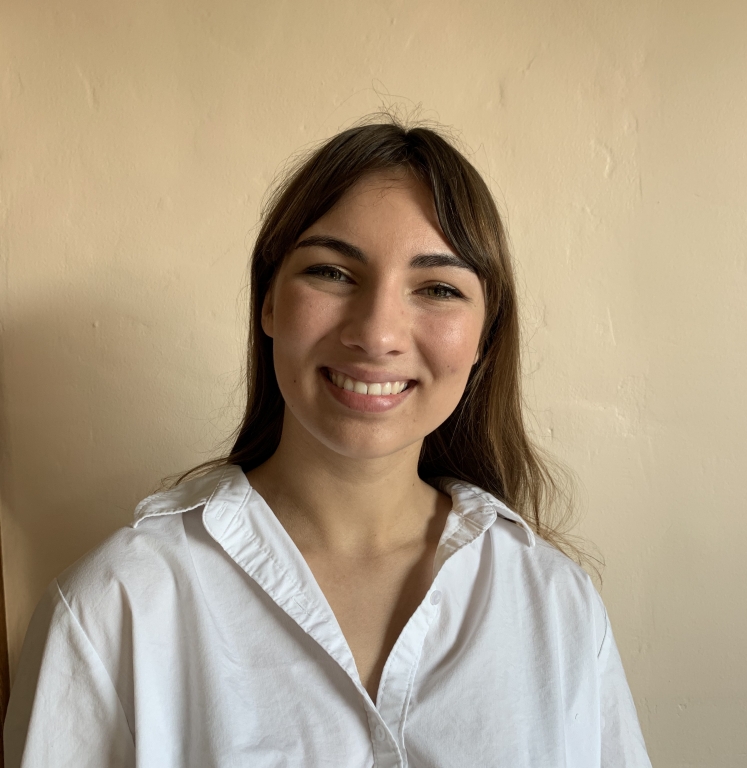
b.jpg)
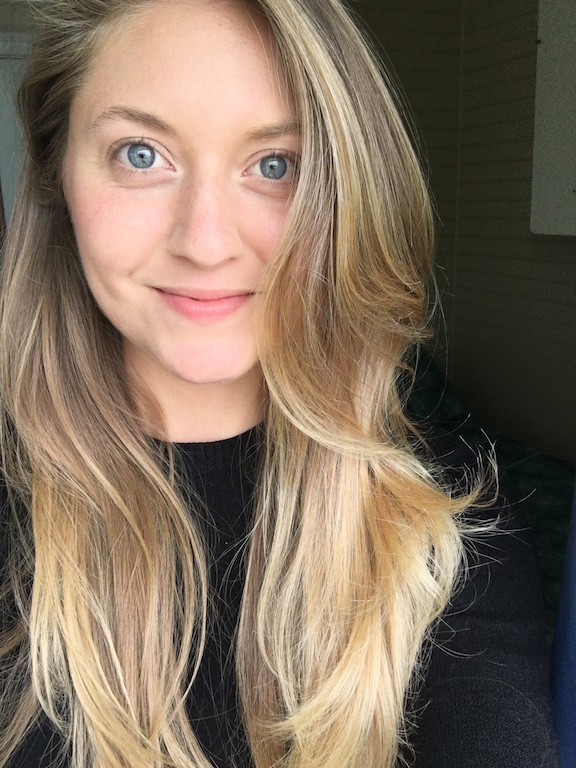

.jpg)
